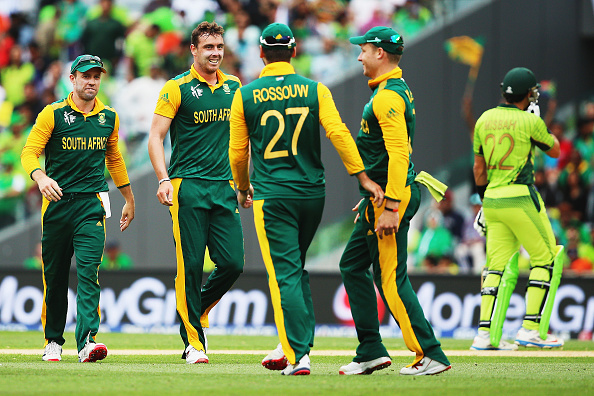The toss might seem like a sideshow to the main event, but whoever wins it is likely to bat first in Sydney.
And, in winning the toss and batting, they will be looking to stay patient, keep their wickets intact and the primary target will be reaching 260. Anything more than that will be a bonus.
For South Africans, their hearts will be in their mouths when the captains meet in the middle. The reality is that in the 48 matches played there since January 2000, the side winning the toss has batted first 39 times. That is a whopping 81 percent of the time – although, that doesn’t mean that the team has necessarily won.
However, it seems fairly nailed down that whoever calls the toss of the coin correctly will bat first and set the other side a target to chase. And, chase is not something that the Proteas have done all that well in over the years, which is when the fans will start to panic. There is no need to.
The average score in Sydney over the past 15 years is 260, although when South Africa played the West Indies there in the pool stages they smashed 408 for 5, with AB de Villiers helping himself to an unbeaten 162 off only 66 balls. The Proteas then rolled the Windies out for 151 to win by a massive 257 runs. However, take De Villiers’ great innings off the total and imagine, just for the sake of this exercise, that he had scored a duck. South Africa would have totalled 246.
That ties in with their average score at the ground, which is 254. Compare that with Sri Lanka’s average at the SCG, which is 242.
It suggests that unless someone like De Villiers or Kumar Sangakkara plays yet another super-human innings, this match will revert to what history has suggested it will. A par score of between 250 and 260, although no cause for alarm if the side winning the toss bats first and only gets 250. It’s defendable.
Sri Lanka themselves found themselves chasing 377 to beat Australia in their pool match on the ground earlier this month, but the Australians were boosted by Glenn Maxwell’s 102 off 53 balls. Pretend, for now, that Maxwell was a ‘normal’ player on the day and subtract his total from that of his team’s and Australia would have finished on around 274.
Sri Lanka were unable to keep the chase going and were bowled out for 312, with Sangakkara getting a run-a-ball 104.
Unless a special player comes off – and as Proteas coach Russell Domingo said in the lead-up to the match, ‘Sangakkara’s due a failure’ – we can see that 260-plus is a very, very decent score at this ground and will win plenty matches.
The toss will therefore be all important and in winning it, and deciding to bat first, the bowling team will need to be disciplined to not allow the batsmen to get away from them. Because, if they do, then 300 is likely to be a total well beyond the team chasing. Patience, with the bat and ball, is going to be vital.
Of course, all the above is down to a historical look at the numbers and not allowing for the X-factor. But the ground does prove helpful to spin and the spinners in this World Cup have so far had a good time, not only in terms of getting the wickets but in keeping the run rates down.
For the above reasons I think we’re in for an intriguing match. If the Proteas win the toss and bat first and get 260 they’ll be right in the contest. If they get 280 I reckon that will be more than enough to defend with their bowling line-up, in which I’d bring back Kyle Abbott.
The opposite is the case when it comes to Sri Lanka batting. Should they win the toss and post 260 at the crease, the odds would be about 50-50 in terms of South Africa reaching it, even with all their mighty batting artillery.
My South African team therefore for the match is: Hashim Amla, Quinton de Kock, Faf du Plessis, AB de Villiers, Rilee Rossouw, David Miller, JP Duminy, Dale Steyn, Kyle Abbott, Morne Morkel and Imran Tahir.







